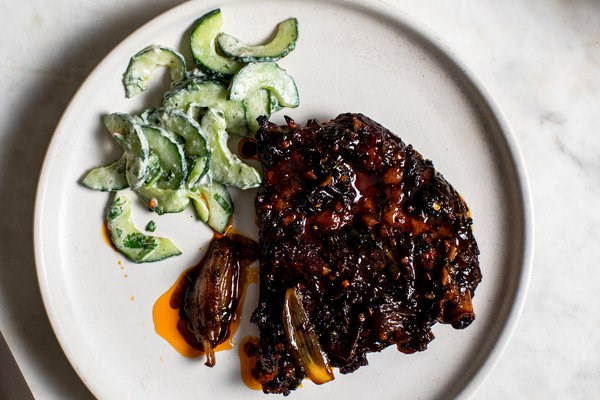The ingredients Ottolenghi uses the most
September 18, 2019 by DarcieYotam Ottolenghi is one of the most, if not the most, loved authors by EYB Members. He wrote four of the top ten most popular books in the Library (Plenty, Jerusalem, Ottolenghi: The Cookbook, Plenty More). Plenty sits in the number one spot, followed by Jerusalem, both of them beating Julia Child’s beloved tome Mastering the Art of French Cooking which trails along in the third spot. When Ottolenghi (like most superstars, he really only needs one name) prints a recipe, thousands of people will rush out to try it.

Ottolenghi definitely has an arsenal of frequently used ingredients. In his most recent New York Times column, he says that he is concerned about “running out of credit” with certain of these ingredients. He feels that he is approaching his “quota” of lemons, tahini, yogurt, and feta because he so often uses them to finish a dish. Another ingredient he worries about overusing is cilantro (coriander). He says “Nearly all of the cuisines in which I feel at home and which give me infinite amounts of playful pleasure are big on cilantro.”
To avoid overusing this particular herb, Ottolenghi has decided to only use it in dishes that amplify its flavor. There are two ways to do this, he says. One way is to use all parts of the plant, including the leaves, stems, seeds, and even the roots if possible. Another way – and one that cooks often do without realizing it – is use it in conjunction with other members of the same botanical family (Umbelliferae). Plants that belong in the same family include carrot, parsnip, celery, parsley, dill and cumin.
Cilantro is a divisive ingredient because so many people claim to hate its soapy flavor. Since it is found in so many cuisines, however, it must have some universal appeal. I believe, based on anecdotal evidence with a sample size of 1, that a person who once hated cilantro can learn not only to like it, but to love it.
When I first tasted cilantro I was overwhelmed by what I perceived to be its soapy flavor. Then I had a dish where the herb was delicately used in concert with complementary flavors. When exposed to such a small amount I could pick out the nuanced, herbal flavor and enjoyed it. I continued to try dishes that used cilantro and eventually grew to particularly enjoy its unique flavor. Now I, like Ottolenghi, can hardly get enough of the stuff.
Photo of Sweet and spicy ribs with cilantro and cucumber from Ottolenghi at The New York Times by Yotam Ottolenghi
Categories
- All Posts (6940)
- Antipasto (2135)
- Author Articles (247)
- Book News (935)
- Cookbook Giveaways (983)
- Cookbook Lovers (257)
- Cooking Tips (109)
- Culinary News (299)
- Food Biz People (552)
- Food Online (791)
- Holidays & Celebrations (272)
- New Cookbooks (149)
- Recipes (1500)
- Shelf Life With Susie (231)
- What's New on EYB (133)
Archives
Latest Comments
- Atroyer7 on Danube Cookbook Review and Giveaway
- demomcook on What foods do you look forward to the most for each season?
- demomcook on Danube Cookbook Review and Giveaway
- Darcie on How cookbooks can help build resilience
- mholson3 on Danube Cookbook Review and Giveaway
- Rinshin on How cookbooks can help build resilience
- sarahawker on Danube Cookbook Review and Giveaway
- Sand9 on Danube Cookbook Review and Giveaway
- hankintoby29 on Heritage Cookies of the Mediterranean World – Cookbook Giveaway
- WBB613 on Feasts of Good Fortune Cookbook Giveaway